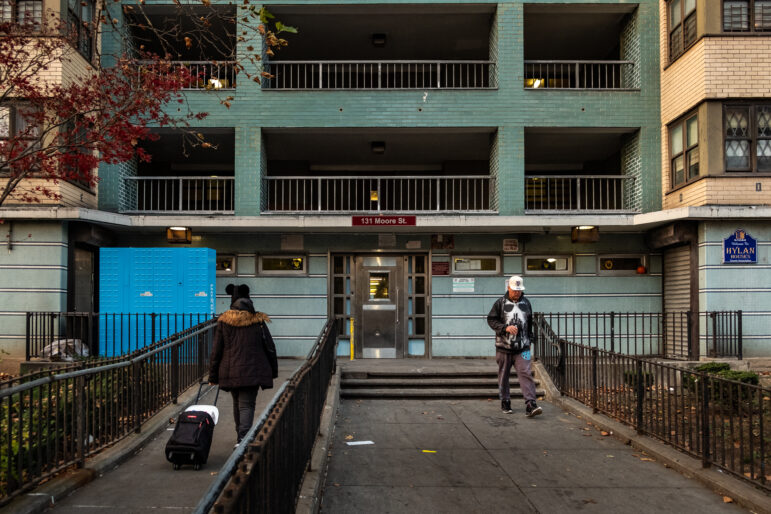In 1985, Trissena Radcliffe was living in a welfare hotel in Manhattan with her two-year-old son, Rondell, no job and few marketable skills. The future was looking bleak.
Sixteen years later, Radcliffe works as a token clerk for New York City Transit. Remarried, she has two more children: Bessie, age 14 and 10-year-old Lamar. And this formerly homeless woman, so down on her luck when City Limits first wrote about her in 1985, now owns a two-family house on Staten Island.
A single helping hand–an innovative job training program that no longer exists–made all the difference for Radcliffe. With a grant from the New York Community Trust, LaGuardia Community College had just started a job training program for homeless women. Radcliffe saw an ad for the classes in a local newspaper, and decided to give it a try.
“Sometimes people just need motivation and a place to go,” Radcliffe says. “Instead of watching stories on TV, I needed to keep active. Once you start motivating yourself, you feel more connected.”
While job training was certainly nothing new, the LaGuardia program was unique in recognizing that homeless people’s lives have extra complications. It went the extra mile by covering transportation and child care costs, eliminating the two biggest barriers to training and employment for homeless people.
It worked. Radcliffe learned computer skills, typing and business English. When the course ended, she moved into an apartment in Ridgewood, Queens, and landed a job as a secretary. Although her rise was not smooth–she quit working and went back on public assistance for several years when an ex-husband began to harass her–Radcliffe recovered. She headed back to work in 1991, first as a security guard, then flipping burgers at a White Castle, before joining the Transit Authority.
But the LaGuardia classes, which became a model for similar programs, are no longer in session. According to Pat White, a senior grants officer for the New York Community Trust, the grant was designed only to establish the program and run it for two years. The college managed to keep it going through 1995.
For Radcliffe, though, the opportunity she found a decade and a half ago endures to this day. “The program definitely helped,” she says. “I think I realized that if you want something better out of life, you have to get out and work for it. You have to give it a try.”
Back to the Old Neighborhood
Introduction
By Alyssa Katz
December 1996
Empowerment Zones Out
By Gillian Andrews
October 1996
A Teen in Trouble Finds a New Hang
By Megan Costello
August/September 1996
In The East Village, Rehab Is a Family Affair
By Megan Costello
June/July 1996
The Founder of a Needle Exchange Dies from a Dose
By Julia Lyon
November 1991
The Grandmother of Loisaida Fights to Keep Her Title
By Hilary Russ
February 1990
A Homeless Mother Wrangles with the City
By Megan Costello
August/September 1990
Home Health Workers Take Care of Business
By Abigail Rao
April 1989
People with AIDS Suffer a Second Epidemic: Homelessness
By Daniel Hendrick
June/July 1988
Wronged Residents Form Their Own Salvation Army
By Hilary Russ
November 1987
City Condemns Concourse Apartments
By Seth Solomonow
November 1986
A Union for the Homeless Takes Hold
By Hilary Russ
March 1980
Tenants Turn a Dump Into a Dream
By Larry Schwartztol
December 1979
Dilapidation and Death on Avenue C
By Seth Solomonow
February 1975
Adding the Final Touch: A Windmill and Solar Panels
By Abigail Rao








